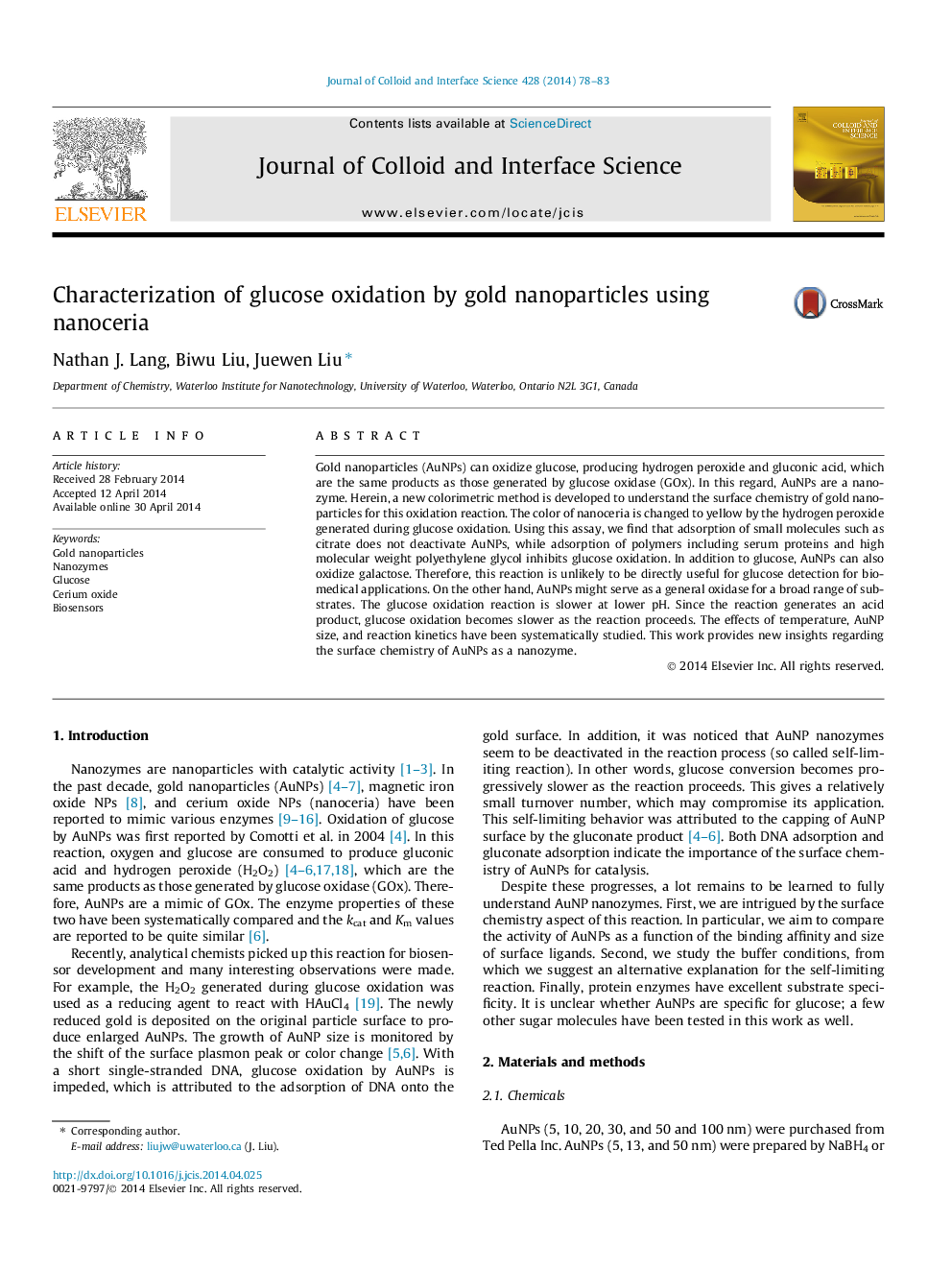| Article ID | Journal | Published Year | Pages | File Type |
|---|---|---|---|---|
| 607217 | Journal of Colloid and Interface Science | 2014 | 6 Pages |
•The surface chemistry of gold nanoparticles as a glucose oxidase mimic is studied.•Glucose oxidation is inhibited by adsorbing polymers, but many small molecules such as citrate do not inhibit the reaction.•The change of pH in the course of reaction is revealed to be important for the self-limiting reaction mechanism.•Gold nanoparticles oxidize not only glucose but also galactose.
Gold nanoparticles (AuNPs) can oxidize glucose, producing hydrogen peroxide and gluconic acid, which are the same products as those generated by glucose oxidase (GOx). In this regard, AuNPs are a nanozyme. Herein, a new colorimetric method is developed to understand the surface chemistry of gold nanoparticles for this oxidation reaction. The color of nanoceria is changed to yellow by the hydrogen peroxide generated during glucose oxidation. Using this assay, we find that adsorption of small molecules such as citrate does not deactivate AuNPs, while adsorption of polymers including serum proteins and high molecular weight polyethylene glycol inhibits glucose oxidation. In addition to glucose, AuNPs can also oxidize galactose. Therefore, this reaction is unlikely to be directly useful for glucose detection for biomedical applications. On the other hand, AuNPs might serve as a general oxidase for a broad range of substrates. The glucose oxidation reaction is slower at lower pH. Since the reaction generates an acid product, glucose oxidation becomes slower as the reaction proceeds. The effects of temperature, AuNP size, and reaction kinetics have been systematically studied. This work provides new insights regarding the surface chemistry of AuNPs as a nanozyme.
Graphical abstractFigure optionsDownload full-size imageDownload high-quality image (78 K)Download as PowerPoint slide
